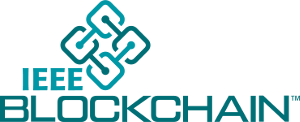IEEE Blockchain Technical Briefs - March 2022
A collection of short technical articles
DAO: The Future of Entertainment Finance
By Travis Cloyd, Global Futurist, Senior Fellow and Professor of Practice, Thunderbird School of Global Management; Dr. Sanjeev Khagram, Director General & Dean, Foundation Professor of Global Leadership, Thunderbird School of Global Management; and Hiroshi Nakata, Outside Board Member and Member of the Investment Committee at Cool Japan Fund MGM, Thunderbird School of Global Management
Taking advantage of technology by way of a decentralized community called Decentralized Autonomous Organization DAO the entertainment industry, including film, gaming, music, XR and beyond, is taking a new approach to acquiring funding and a revolutionary earning method. Using this DAO format, t hey can replace traditional means of funding like independent production, loans, gap finance, private equity film financing, etc. The DAO raises funds through a crowdfunding model in which the protocol sells tokens to raise funds and fill the DAO treasury. Through the film, gaming, XR, and music industries, DAOs would replace the "work to earn" model with the "invest to earn" and "play to earn" models. Using research gathered from several sources, including Wikipedia, cryptonews, wrapbook, etc., this paper outlines the various funding methods available in the entertainment industry today. It also explains how DAOs, utilizing blockchain technology, fan tokens, NFTs, the Metaverse, and Web 3.0, would change the funding and earning process in the entertainment industry. While the thoughts are still undergoing refinement, several projects like Movecoin, Blockbuster, Daywalker Movie Fund ( Play it Forward ( and a few others have already started implementing the DAO mechanism in their approach to raising funds. The democratic atmosphere DAOs can bring to investors, game creators, and artists are guaranteed to create a disruptive future in the entertainment industry.
Blockchain Based Secure HL7 Digital Healthcare System
By Gora Datta, CAL2CAL Corporation, Irvine, California, USA; Razvan Sfat, PhD student, Faculty of Electronics, Telecommunications and Information Technology, University Politehnica of Bucharest, Romania; Constantin Viorel Marian, Faculty of Engineering in Foreign Languages, University Politehnica of Bucharest, Romania; and Nicolae Goga, University of Groningen, Netherlands
In many countries, especially in developing ones, the need for universally accessible solutions is in great demand. The use of mobile phones has become commonplace around the world, so making software solutions that can be easily accessed from mobile devices is a must. Also, in medical research, the use of questionnaires is a common practice, so the development of a solution that combines the need to use questionnaires with the easiest access to them is a natural step.
Blockchain-Enabled Verifiable Collaborative Learning for Industrial IoT
By Jayasree Sengupta, Indian Institute of Engineering Science and Technology, Shibpur, India; Sushmita Ruj, University of New South Wales, Sydney, Australia; and Sipra Das Bit, Indian Institute of Engineering Science and Technology, Shibpur, India
With the commencement of the Industrial Internet of Things (IIoT), followed by Industry 4.0, the amount of data generated by the connected components has grown drastically. This opens up new possibilities for effectively utilizing such data to improve the operational services of the industries as well as provide intelligent customer support. To gain knowledge, industries are inclined toward developing novel machine learning (ML) approaches for processing or modeling such data. Hence, it is extremely important to collect training data distributed across enterprises or industries to develop a highly trained model. However, training ML models in such a distributed setting introduces additional security concerns as industries are unwilling to share their private and sensitive information with third-party servers. As a result, collaborative learning has recently been introduced, which allows data owners to collectively train a globally shared model by leveraging their private inputs without exporting them to any external server.
Thwarting Counterfeit Electronics by Blockchain
By Muhammad Monir Hossain, Electrical and Computer Engineering, University of Florida; Nidish Vashistha, Electrical and Computer Engineering, University of Florida; Jeffery Allen, Air Force Research Laboratory, Eglin Air Force Base, Florida; Monica Allen, Air Force Research Laboratory, Eglin Air Force Base, Florida; Farimah Farahmandi, Electrical and Computer Engineering, University of Florida; Fahim Rahman, Electrical and Computer Engineering, University of Florida; and Mark Tehranipoor, Electrical and Computer Engineering, University of Florida
Counterfeit electronics are ubiquitous in various applications, from computing devices to space applications. These may raise severe safety concerns in security-critical applications and incur a significant revenue loss for original device manufacturers. Several approaches are developed based on hardware intrinsic properties and sensor systems to thwart counterfeit electronics. However, most of these approaches demand a technical skill-set and sophisticated tools, making the supply chain entities inconvenient to verify on the go. In this article, we propose a blockchain-based framework, which leverages traceability and provenance records to overcome the existing limitations in verifying the authenticity of electronic devices.
Blockchain-Based Planetary Level Autonomous Systems
By Bina Ramamurthy, CSE Department, University at Buffalo; and Kumar Madurai, ISE Department, University at Buffalo
The advent of the internet ushered in extraordinary growth on many technological fronts, from e-commerce to social networking. But we are yet to find effective solutions to global problems such as plastic cleaning, pandemic management, and energy distribution. These problems are inherently prevalent worldwide and typically addressed by centralized authorities with numerous trust intermediaries, which incur significant overhead and inefficiencies. Moreover, the stakeholders and participants of these large systems are culturally, socially, and geographically diverse. Building a system connecting them to solve a global problem demands enormous trust. This trust is currently realized in the financial world using centralized intermediaries such as banks and clearinghouses. The release of Bitcoin in 2009 changed this situation with its blockchain protocol (infrastructure) by enabling decentralized trust intermediation. Ethereum’s smart contracts followed up this innovation to strengthen trust through verification and validation. These two advances collectively enabled transactions among unknown participants anywhere, opening up opportunities and laying the foundation for addressing planetary level problems. This paper discusses the enabling features in realizing planetary-level autonomous systems and how blockchain technology elegantly incorporates these features.
An Introduction to Blockchain’s Growing Industrial Impact
By Henry F. Korth, Fellow, IEEE, Lehigh University, PA, USA
At its core, a blockchain is a database, an organized collection of information. What makes blockchains distinctive is the special type of security they offer, both data security, and secure addition of new data by untrusting partners. The various blockchains in existence use various data structures and algorithms, but collectively they enable novel means for enterprises and individuals to access, share, and create data in ways that will disrupt industries and create new ones. No enterprise that uses information can escape permanently the impact of blockchain technology. In this short article, we shall explore some of these and note the mathematics, computer science, and systems engineering that underpins these trends.
A Survey of Probabilistic Micropayment Schemes
By Sulyab Thottungal Valapu, Viterbi School of Engineering, University of Southern California; and Bhaskar Krishnamachari, Viterbi School of Engineering, University of Southern California
Although the earliest electronic micropayment schemes date back to the mid-90s, recent years have witnessed a resurgence of research interest in the field due to the rising popularity of cryptocurrencies and the associated increase in transaction fees. Probabilistic micropayment schemes have shown particular theoretical promise due to their ability to aggregate payments beyond client-merchant pairs. In this paper, we review various probabilistic micropayment protocols proposed in both pre-cryptocurrency and post-cryptocurrency eras and provide an analysis of what the future of research in this field could look like.
2022 IEEE Blockchain Technical Briefs Editorial Board

Sanjeev Khagram Editor-in-Chief

Nicolae Goga Editor-in-Chief
Subscribe to the IEEE Blockchain Technical Briefs
Join our Blockchain Technical Community and receive our Technical Briefs by email.
IEEE Blockchain Technical Briefs Editorial Board
Gora Datta, FHL7, SMIEEE, SMACM, Managing Editor
2024 Editorial Team
Justin Y. Shi, PhD, Editor-in-Chief
Boleslaw K. Szymanski, PhD
R.L. Shankar, PhD
Imran Bashir
Nicolae "Nicu" Goga, PhD
Constantin “Viorel” Marian, PhD
View the 2023 IEEE Blockchain Technical Briefs Editorial Board
View the 2022 IEEE Blockchain Technical Briefs Editorial Board
View the 2018-2020 IEEE Blockchain Technical Briefs Editorial Board
Past Issues
Read the top five most popular IEEE Blockchain Technical Briefs articles.
Read more (PDF, 731 KB)



















